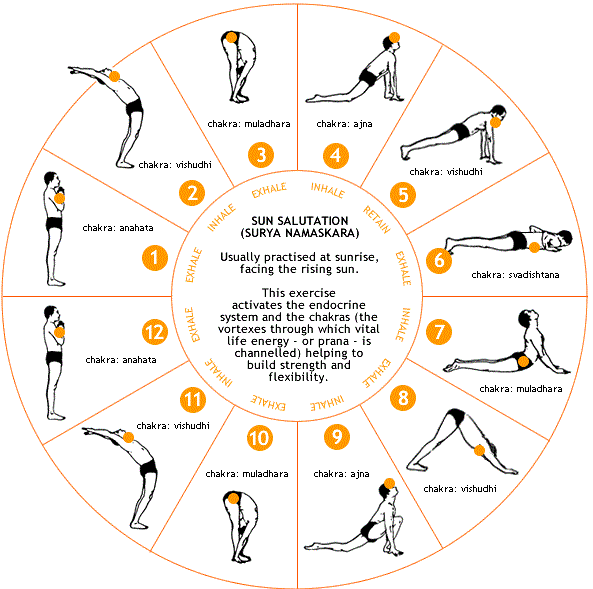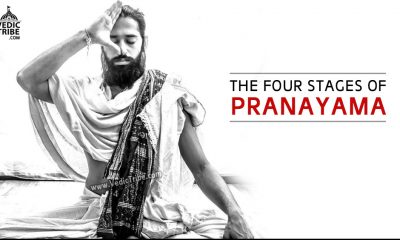Yog
Benefits and Guidelines of Surya Namaskar
Published
5 years agoon
By
Vedic Tribe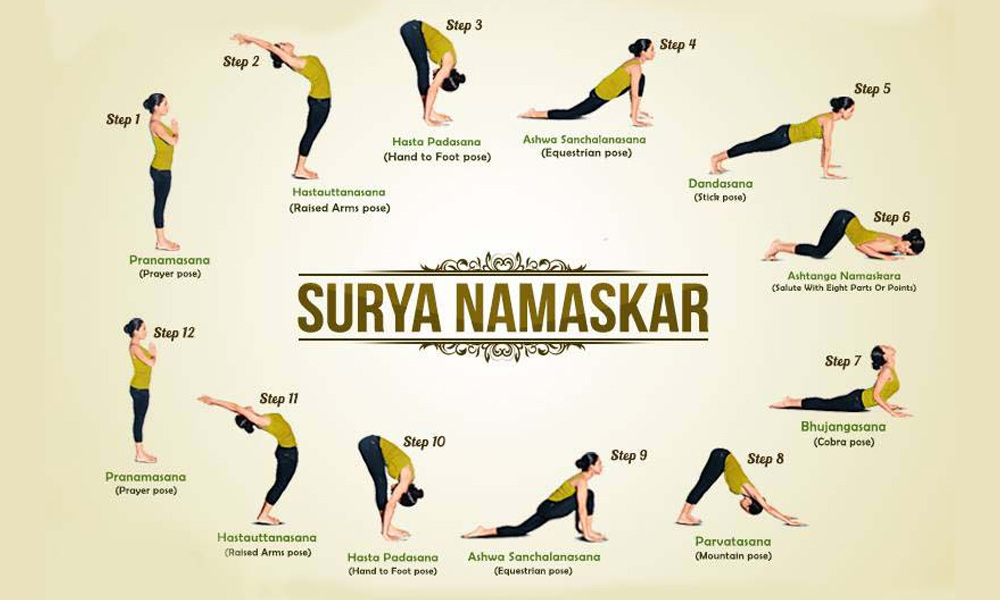
In Hinduism, the Sun god is worshiped as a symbol of health and immortal life. The Rig Veda declares that “Surya is the Soul, both of the moving and unmoving beings”. The Sun Salutation originated as a series of prostrations to the sun. Traditionally, it is performed at dawn, facing the rising sun. In time, each of the twelve positions came to have its own mantra, celebrating aspects of the sun’s divinity.
The Sun Salutation is a graceful sequence of twelve positions performed as one continuous exercise. Each position counteracts the one before, stretching the body in a different way and alternately expanding and contracting the chest to regulate the breathing. Practiced daily it will bring great flexibility to your spine and joints and trim your waist.
The straightforward Surya Namaskar that has been practiced in India for years has not too long ago discovered lots of takers.And if you wish to have a just right begin to your day, what higher than the Surya Namaskar, which is legendary to have a number of health benefits. There are 12 completely different poses to do in a Surya Namaskar and also you’re recognized to have completed a whole spherical while you’ve carried out two consecutive sets.
Benefits of Surya Namaskar
Surya Namaskar: Making the body a stepping-stone
Surya Namaskar means to bow down to the sun in the morning. The sun is the life source for this planet. In everything that you eat, drink and breathe, there is an element of the sun. Only if you learn how to better “digest” the sun, internalize it, and make it a part of your system, do you truly benefit from this process.
The physical body is a fantastic stepping-stone for higher possibilities, but for most people it functions like a road block. The compulsions of the body do not allow them to go forward. Being in sync with the solar cycle is an important part of balance and receptivity, a means of taking the body to the point where it is no longer a hurdle.
Surya Namaskar: Syncing with the solar cycle
Surya Namaskar, which is known as “Sun Salutation” in English, is essentially about building a dimension within you where your physical cycles are in sync with the sun’s cycles, which run at about twelve-and-a-quarter years. It is not by accident but by intent that it has been structured with twelve postures or twelve asanas in it. If your system is in a certain level of vibrancy and readiness, and in a good state of receptivity, then naturally your cycle will be in sync with the solar cycle.
Young women have an advantage in that they are also in sync with the lunar cycles. It is a fantastic possibility that your body is both connected to the solar cycle and to the lunar cycle. Nature has granted this advantage to a woman because she has been entrusted with the extra responsibility of propagating the human race. So she has been given some extra privileges. But many people don’t know how to handle the extra energy that is generated by that relationship and so they treat it as a curse and even a kind of madness, as evidenced by the word “lunar” turning into “loony.”
Importance of Surya Namaskar
Between the lunar cycle, which is the shortest cycle (a 28-day cycle) and the cycle of the sun, which is over twelve years, there are many other kinds of cycles. The word “cyclical” denotes repetition. Repetition means that in some way it is compulsive. Compulsiveness means it is not conducive for consciousness. If you are very compulsive, you will see that situations, experiences, thoughts and emotions will be cyclical. They keep coming back to you once in six months or eighteen months, three years or six years. If you just look back and see, you will notice this. If they come once in over twelve years, that means your system is in a good state of receptivity and balance. Surya Namaskar is an important process to enable that to happen. The sadhana is always to break the cycle so that there is no more compulsiveness, and you have the right kind of foundation for consciousness.
The repetitive nature of cyclical movements or systems, which we traditionally refer to as samsara, is the necessary stability for the making of life. If it was all at random, it would not be possible to house a steady life-making machine. So, for the solar system and for the individual person, being rooted in cyclic nature is the firmness and steadiness of life. But once life has reached the level of evolution that human beings have reached, it is natural to aspire not just for stability, but for transcendence. Now, it is left to individual human beings either to remain trapped in the cyclical, which is the basis of stable physical existence, or to use these cycles for physical wellbeing and ride them and go beyond the cyclical.
How to do Surya Namaskar
One round of Sun Salutation consists of two sequences, the first leading with the right foot in positions 4 and 9, the second leading with the left. Keep your hands in one place from positions 3 to 10 and try to co-ordinate your movements with your breathing. Start by practicing four rounds and gradually build up to twelve rounds.
- Stand erect with feet together and hands in the prayer position in front of your chest. Make sure your weight is evenly distributed. Exhale.
- Inhaling, stretch your arms up and arch back from the waist, pushing the hips out, legs straight. Relax your neck.
- Exhaling, fold forward, and press your palms down, fingertips in line with toes – bend your knees if necessary.
- Inhaling, bring the left (or right) leg back and place the knee on the floor. Arch back and look up, lifting your chin.
- Retaining the breath, bring the other leg back and support your weight on hands and toes.
- Exhaling, lower your knees, then your chest and then your forehead, keeping your hips up and your toes curled under.
- Inhaling, lower your hips, point your toes and bend back. Keep legs together and shoulders down. Look up and back.
- Exhaling, curl your toes under, raise your hips and pivot into an inverted “V”shape. Try to push your heels and head down and keep your shoulders back.
- Inhaling, step forward and place the left (or right) foot between your hands. Rest the other knee on the floor and look up, as in position 4.
- Exhaling, bring the other leg forward and bend down from the waist, keeping your palms as in position 3.
- Inhaling, streach your arms forward, then up and back over your head and bend back slowly from the waist, as in position 1.
- Exhaling, gently come back to an upright position and bring your arms down by your sides.
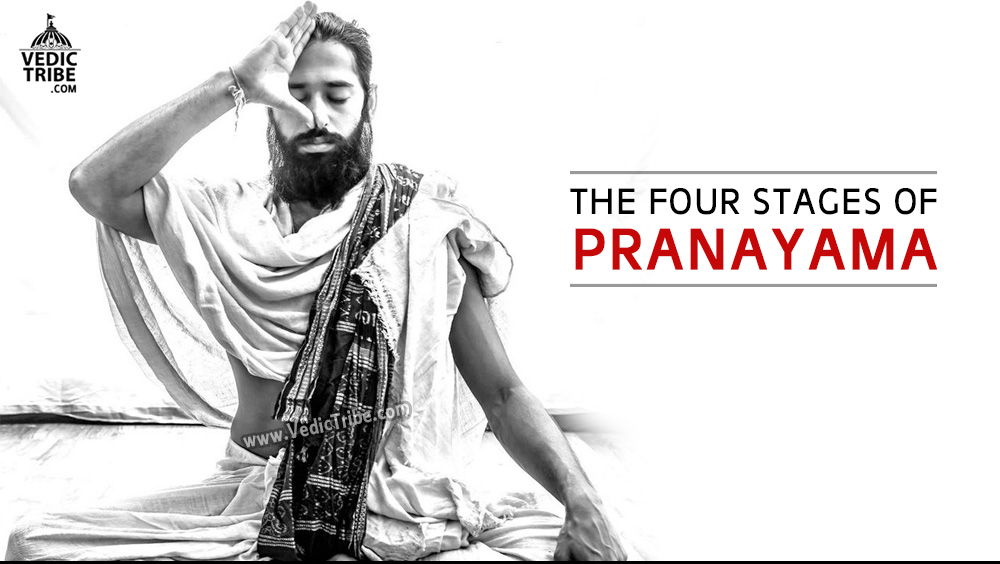
by Swami Sivananda
Three Bandhas
There are four Bhedas (piercing of divisions) viz., Surya, Ujjayi, Sitali and Basti. Through these four ways, when Kumbhaka is near or about to be performed, the sinless Yogi should practise the three Bandhas. The first is called Mula Bandha. The second is called Uddiyana, and the third is Jalandhara.
Their nature will be thus described. Apana which has a downward tendency is forced up by contracting and drawing the anus upwards. This process is called Mula Bandha. When Apana is raised up and reaches the sphere of Agni (fire), then the flame of Agni grows long, being blown about by Vayu. The Agni and Apana come to or commingle with Prana in a heated state. Through this Agni, which is very fiery arises in the body the flaming of fire which rouses the sleeping Kundalini. Then the Kundalini makes a hissing noise, becomes erect like a serpent beaten with a stick and enters into the hole of Brahmanadi (Sushumna). Therefore Yogins should daily practise Mula Bandha. Uddiyana should be performed at the end of Kumbhaka and at the beginning of inhalation. Because Prana ‘Uddiyate’—goes up the Sushumna in this Bandha, it is called Uddiyana by the Yogins. Being seated in the Vajra posture and holding firmly the two toes by the two hands near the two ankles, he should gradually upbear the Tana (thread or Nadi, the Sarasvati Nadi) which is on the western side of Udara (the upper part of the abdomen, above the navel), then to neck.
When Prana reaches Sandhi (junction) of navel, slowly it removes the diseases of the navel. Therefore this should be practised perfectly. Uddiyana can be done in standing posture also. When you practise in standing posture, place your hands on the knees or a little above the knees. Keep the legs a little apart.
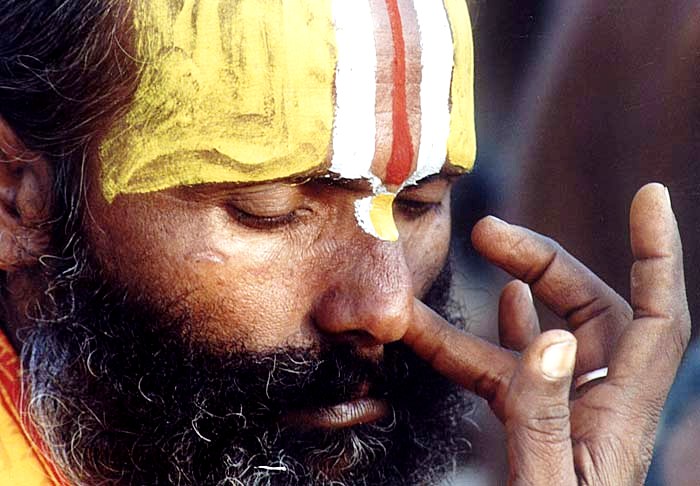
The Bandha called Jalandhara should be practised at the end of Puraka. Jalandhara is of the form of contraction of the neck and is an impediment to the passage of Vayu upwards. When the neck is contracted by bending the head downwards, so that the chin may touch the chest, Prana goes through Brahmanadi. Assuming the seat, as mentioned before, one should stir up Sarasvati and control Prana. On the first day Kumbhaka should be done four times, on the second day ten times and then five times separately. On the third day, twenty times will do and afterwards Kumbhaka should be performed with the Bandhas and with an increase of two times per day.
Arambha Avastha
pranava (Om) should be chanted with three Matras (prolonged intonations). This is for the destruction of the former sins. The mantra, Pranava, destroys all obstacles and all sins. By practising this he attains the ‘Arambha Avastha’ (the beginning or first stage). The body of the Yogi begins to perspire. When it perspires he should rub it well with the hands. The trembling of the body also occurs. He sometimes jumps like a frog.
Ghata Avastha
Then follows the Ghata Avastha, the second state, which is acquired by constantly practising suppression of breath. When a perfect union takes place between Prana and Apana, Manas and Buddhi or Jivatman and Paramatman without opposition, it is called Ghata Avastha. He may now practise only for about one-fourth of the period prescribed for the practice before. By day and by evening let him practise only for a Yama (3 hours). Let him practise the Kevala Kumbhaka once a day. Drawing away completely the organs from the objects of senses during cessation of breath is called Pratyahara. Whatever he sees with his eyes, let him consider as Atman. Whatever he hears with his ears, let him consider as Atman. Whatever he smells with his nose, let him consider as Atman. Whatever he tastes with his tongue, let him consider as Atman. Whatever the Yogi touches with his skin, let him consider as Atman. Then various wonderful powers are obtained by the Yogi, such as clairvoyance, clairaudience, ability to transport himself to great distances within a moment, great power of speech, ability to take up any form he likes, ability to become invisible and the wonder of transmuting iron into gold.
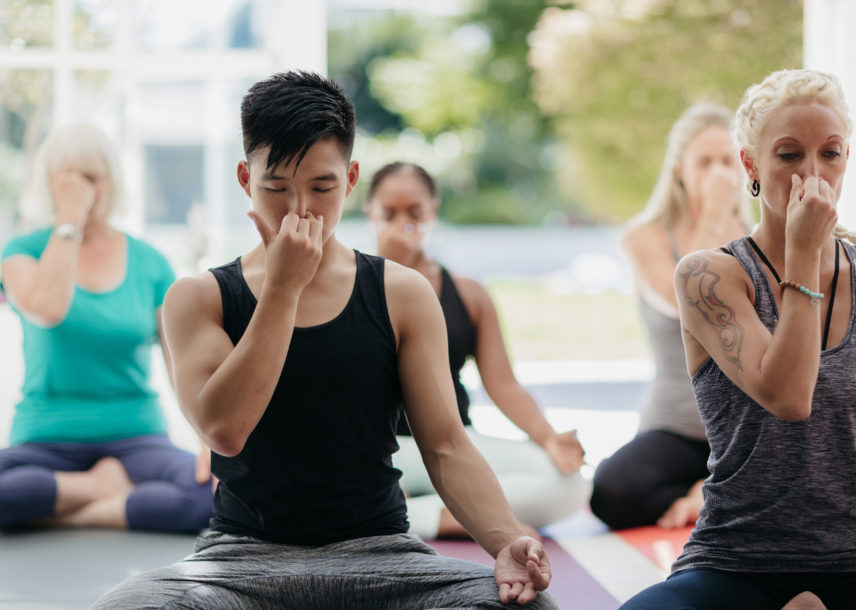
That Yogi who is carefully practising Yoga, attains the power to levitate. Then, should the wise Yogi think that these powers are great obstacles in the attainment of Yoga, he should never take delight or recourse to them. The Yogins should not exercise these powers before any person whomsoever. He should live in the world as an ordinary man in order to keep his powers concealed. His disciples would, without doubt, request him to show them (his powers) for the gratification of their desire. One, who is actively engaged in one’s (world-imposed) duties, forgets to practise Yoga. So he should practise day and night nothing but Yoga without forgetting the words of his Guru. Thus he who is constantly engaged in Yogic practices, passes the Ghata state. Nothing is gained by useless company of worldly-minded people. Therefore, one should with great effort shun evil company and practise Yoga.
Parichaya Avastha
Then by such constant practice, the Parichaya Avastha (the third state) is gained. Vayu or breath, through arduous practice pierces the Kundalini, along with Agni through thought and enters the Sushumna, uninterrupted. When one’s Chitta enters the Sushumna along with Prana, it reaches the high seat in the head, along with Prana. When the Yogi by the practice of Yoga acquires power of action (Kriya Sakti) and pierces through the Six Chakras and reaches the secure condition of Parichaya, the Yogi then verily sees the threefold effects of Karma. Then let the Yogi destroy the multitude of Karmas by the Pranava (!). Let him accomplish ‘Kaya-Vyuha’, a mystical process of arranging the various Skandhas of the body and taking various bodies, in order to exhaust all his previous Karmas without the necessity of being reborn. At that time let the great Yogi practise the five Dharanas* or forms of concentration by which, command over the five elements is gained and fear of injuries by any one of them is removed.
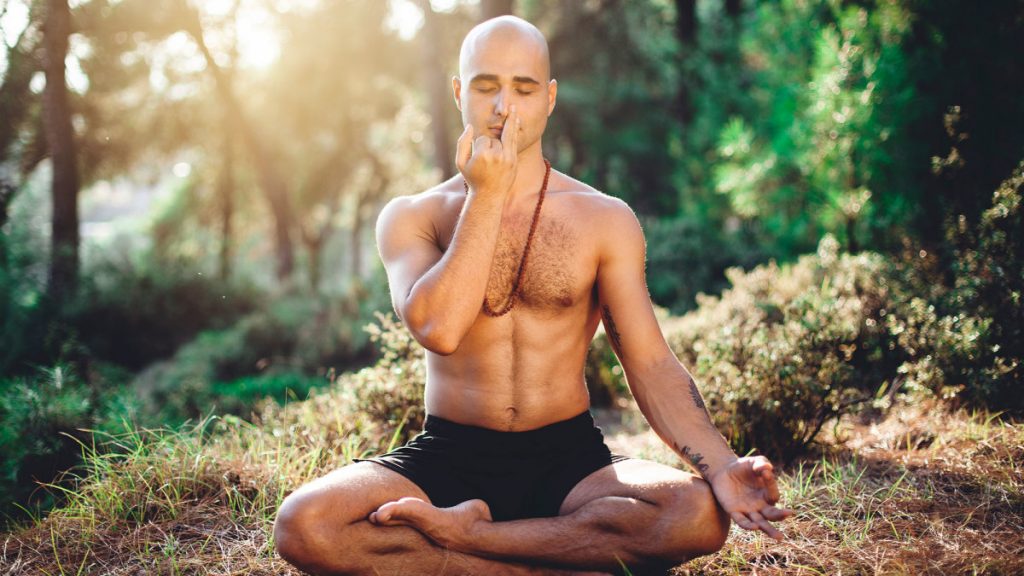
Nishpatti Avastha
This is the fourth stage of Pranayama. Through graduated practice the Yogi reaches the Nishpatti Avastha, the state of consummation. The Yogi, having destroyed all the seeds of Karma drinks the nectar of immortality. He feels neither hunger nor thirst, nor sleep nor swoon. He becomes absolutely independent. He can move anywhere in the world. He is never reborn. He is free from all diseases, decay and old age. He enjoys the bliss of Samadhi. He is no longer in need of any Yogic practice. When the skilful tranquil Yogi can drink the Prana Vayu by placing his tongue at the root of the palate, when he knows the laws of action of Prana and Apana, then he becomes entitled to liberation.
A Yogic student will automatically experience all these Avasthas one by one as he advances in his systematic, regular practices. An impatient student cannot experience any of these Avasthas through occasional practices. Care should be taken in the observances of Mitahara and Brahmacharya.
Spiritual Wisdom
The Yogic Practice of Quiet Time for Children
Published
5 years agoon
November 19, 2020By
Vedic Tribe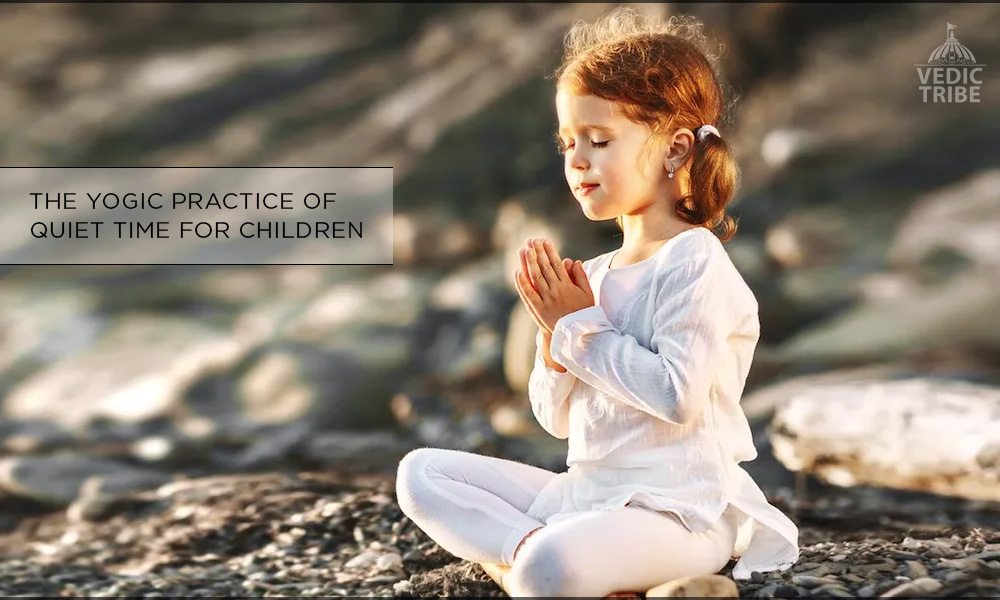
~ Subhashish Chatterjee
The Need for Silence:
In the rush of activities and noise that have become a part of modern living, we often forget the calming effect of quiet time. We think it is alright if we are full of action and speed and postpone the soul’s hunger for peace and silence. We fail to realize the need to spend a few quiet moments daily, in our own company.
Sitting quietly is a powerful technique for self-improvement. It has great importance in learning process, especially in imbibing higher values of life. silence gives rise to deeper thoughts and knowledge. Sages and saints, seers and seekers, in all age and places, have sat in deep silence in order to search profound truths of life. In the depth of that silence the light of knowledge dawned on them.
It is rightly said, ‘Voice of God can be heard in the ocean of silence.’
Exercise in Quietness
Although sitting silent is a challenge before all, it is especially a daunting task for students or young people. By nature they are full of energy and activity. With their growth graph at its peak, their minds joins with the outgoing mind and the result is what we see around us. Even when they are forced to remain silent, it is only the silence of closed lips while their minds go on chattering and jumping from one thought to another like a mad monkey. This is because the nature of mind is itself as mentioned in the Gita (6.34-35).
But another reason for this restlessness is that they are not made aware of the wonderful effect of silence. Most young students do not know how silence can be a source of greater concentration and happiness. We wish to present here a technique in visualization as a step to true silence. This will give the young minds an opportunity to taste the sweetness of silence.
Here is how one can practice it:
This can be practiced in a classroom or home and is of special importance in urban situations where students hardly get a chance to be in touch with nature. Surrounded by traffic and noise, traveling through busy roads and lanes, students often miss the healing touch of silence and of nature.

Teacher/Parent: Welcome to the quiet time. Having been in an atmosphere of sound and activity, and of many study assignments, you now need to rest the body and mind. You need relaxation. Let us try to unwind and relax. Let us take a mental trip to a place of natural beauty and calmness. Please sit relaxed with eyes closed and listen to what I say and follow my footsteps to wherever I take you mentally. Now please close your eyes.
The teacher should speak clearly and slowly. He should be sincere and earnest and not do it as a matter of routine.
Let us mentally leave all things and start our trip. We are going out of classroom. Maybe we will go to a green hillside. It is all green and beautiful. There are a number of wild flowers, a variety of flowers. There are roses too. Let us go and touch them. The whole place is full of natural beauty. How beautiful! Let us sit amidst them. For a long time. Pay no attention to whatever sounds or thoughts that may knock at your mind’s door. Feel the presence of divinity in nature. Feel the bracing wind, the sound of birds, rustling of leaves and so on. Sit quietly without movement.
Now, having been in that healing touch of the nature, slowly trace your steps back to where we are and slowly open your eyes.
One can similarly take the children to seaside, or riverfront or waterfalls, or any place of quietness and natural beauty and ask the students to feel being there. One can use one’s creativity to add newer dimensions to it. It is truly inner ride to joy!
The quiet time may also be a trip to a place of holiness and worship. One can go the sacred Ganges in Himalayas. Or one can go to the banks of Narmada or any such place of holiness.
One can also think of a form of God one likes. The teacher can ask the students to feel the presence of Divine in their hearts. The formless Divine may take the form of a god or goddess or a sage and one can think of that. Or one can tell the children to visualize the flame of a burning lamp or candle and concentrate on it.
One may instruct the students thus:
Let us enter the inner sanctuary and see the burning flame there. Being present in the light of flame, one’s inner being is now full of light. All darkness has gone. All senses are full of light. Our eyes and ear divinised, one see divinity everywhere. Let us feel the presence of inner light and spread this light everywhere. It is bringing goodness and peace and joy wherever – within me, in my home, colony, state, country, whole world.
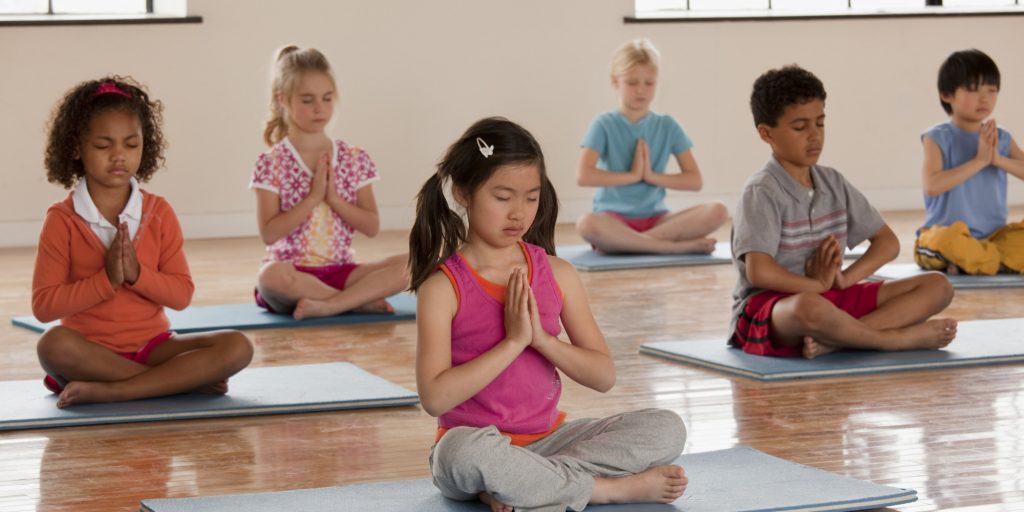
The practice
This kind of quiet time, or a light form of meditation, may be made a part of daily teaching sessions. The students may be encouraged to practice it in their houses as well. At home, one gets up early in the morning, even before leaving the bed they should sit silently on bed and thank God for last night’s peaceful slumber. Then they can think of the important or main activities of the day, followed by a prayer to God that the day’s activities are done well while God is there to guard and guide us at every step. Again in the night before sleeping one can sit on the bed and do a kind of self-audit of the activities one has done in a day. If everything has gone well, if any good work has been done, let us thank God for it. If there is anything wrong, beg apology and promise not to repeat it in future.
Needless to say, quiet time has many benefits. It increases concentration, sharpens intelligence improves mental alertness, self-confidence, inner equilibrium and makes one peaceful. Let us be quiet to know the joy of quietness!
(The author is a staff member of Ramakrishna Mission Boys Home College, Rahara, West Bengal.)
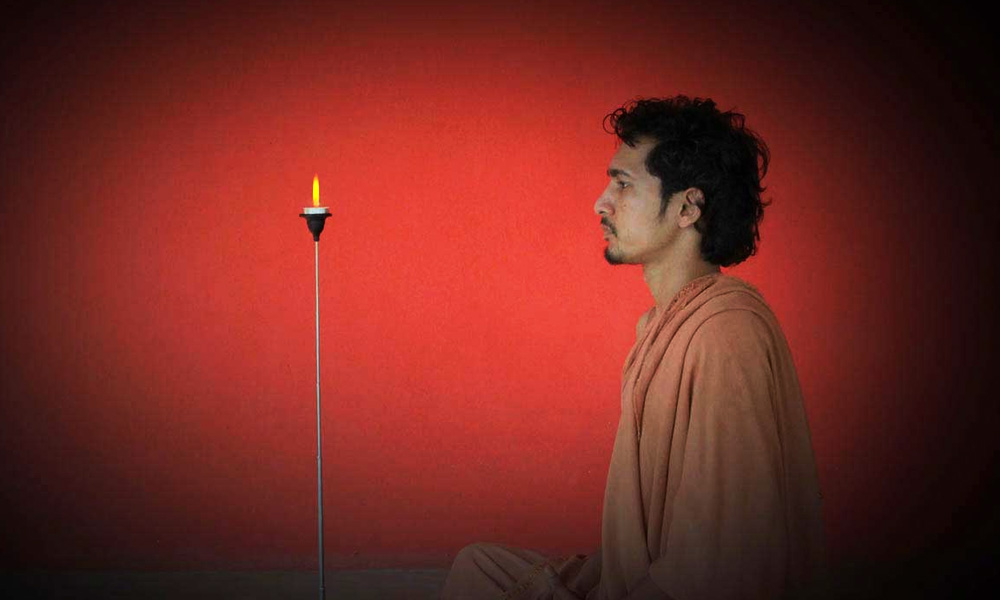
Yogic Practice of Concentration, Still Eyes, Still Mind
Looking intently with an unwavering gaze at a small point until tears are shed, is known as trataka by the acharyas. ~ (“Hatha Yoga Pradipika” 2:31)
Trataka is a deceptively simple but powerful practice. Trataka means ‘to gaze steadily at a fixed point’ and there are two forms of the practice. One is ‘bahiranga’ or external trataka and the other is ‘antaranga’ or internal trataka. Bahiranga is easier to practise because one simply has to gaze at an object or symbol. However, antaranga trataka involves clear and stable inner visualisation of an object.
In the practice of trataka an object is gazed at until its subtle form manifests in front of the closed eyes. The point of concentration is usually a symbol or object which activates the inner potential and can absorb the mind. The symbol most commonly used is a candle flame, because even after the eyes are closed, the impression remains naturally for some time, and then antaranga trataka can easily be performed. The purpose of focusing the eyes on an external object is to arouse the internal vision and make it absolutely steady by stopping the eye movements.
Trataka is a process of concentrating the mind and curbing its oscillating tendencies. The one-pointed concentration of mind is termed ‘ekagrata’. There are numerous distractions which obstruct ekagrata. Association and identification through the eyes and sight are major contributing factors to this leakage. Furthermore, the eyes move constantly, either in large movements (saccades), or tremors (nystagmus). Even when the eyes are focused on an external object the perception is always fluctuating due to these spontaneous movements. When the same object is constantly seen, the brain becomes accustomed or habituated, and soon stops registering that object. Habituation coincides with an increase of alpha waves indicating diminished visual attention to the external world. When alpha waves are produced it indicates that particular areas of the brain have ceased functioning. This is the case,, not only with trataka, but with any practices of concentration. When the awareness is restricted to one unchanging sense stimulus, like touch or sound, the mind is ‘turned off’. Complete absorption in a single perception induces withdrawal of contact with the external world.
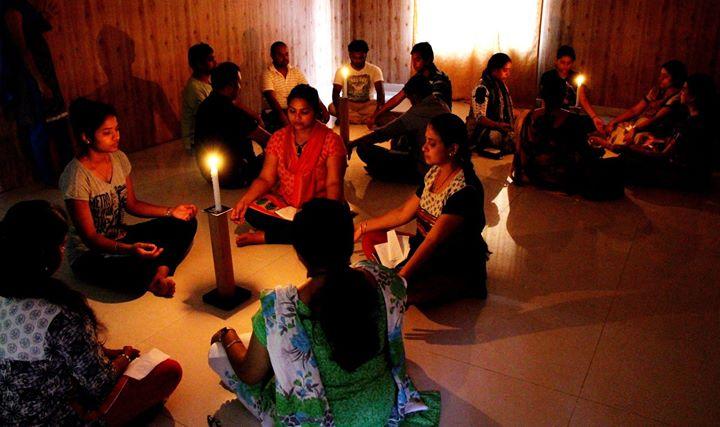
In trataka the result is a ‘blanking out’ of visual perception, and in the wake of this suspension, the central nervous system begins to function in isolation. This is known by yogis as sushumna. When the brain is isolated from the sense modalities and from the associated mental processes, ideas, memories, etc., triggered by these thought impressions, spiritual consciousness emerges. The higher brain, liberated from time and space, is experienced-There are many other equally effective symbols for trataka apart from the candle flame, such as a crystal hall, a shiva lingam, yantra, mandala, the full moon, a star, the rising or setting sun (when it is orange, not yellow), a chakra, the symbol om or your own shadow. These are the most effective, but trataka can also be done on a rose, a tree, a mountain, the sea, the sky, a rock, a black dot or any object of your choice. However, one should be careful when selecting the trataka symbol. If for example, you concentrate on the form of Kali you will arouse that aspect of your inner being if you are not beyond it. You may even manifest Kali and be terrified by her fearsome form. A steady flame of light is the most practical and safest, unless your guru advises you otherwise.
Technique Bahiranga trataka
Practise in a dark room which is free from drafts and insects – place a candle at arms length in front of you with the flame at eye level – it is important that the flame does not flicker in the least – sit in a comfortable meditative pose, preferably siddhasana/siddha yoni asana and place the hands on the knees in either gyana or chin mudra – relax your whole body, close your eyes and prepare yourself as for any meditative practice -make yourself cairn and quiet and be prepared to keep your body perfectly still throughout the entire practice -practise kaya sthairyam for a few minutes – open your eyes and gaze at the middle portion of the flame (ideally one should focus on the red tip of the wick as it does not move due to draft) – gaze for as long as possible without blinking and without strain until the eyes begin to water or tire – you will be able to increase the time gradually with practice to ten minutes – remain the silent witness (sakshi) throughout, observing all thoughts and feeling which may arise – when you close your eyes keep them fixed an the impression in chidakasha – if the afterimage moves, bring it back to the centre and continue gazing until the impression disappears -once you can stabilise the afterimage, study it and look intently at its colour.
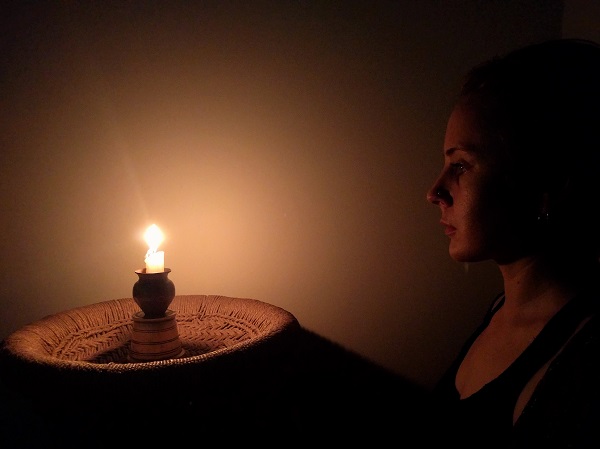
Antaranga trataka
Prepare yourself as in the technique for bahiranga trataka – keep the eyes closed throughout and concentrate on your symbol – if you have no symbol try to visualise a point of light, like a twinkling star, or a crescent or full moon – try to see the object clearly and steadily in the dark space or chidakasha, in front of the closed eyes – practise for five to twenty minutes. (This practice has to be cultivated over a long time.)
Trataka can be done at any time but is more effective when performed on an empty stomach. The most suitable time is between four and six in the morning after asana and pranayama practice. If you wish to delve deeper into the mind, trataka should be done late at night before going to bed and before japa or meditation. If there is an uncontrollable How of thought during trataka, mantra japa should also be done at the same time. One can also imagine that one is breathing in a straight line from, the point of concentration through the eyebrow centre and straight back to ajna chakra at the back of the head. When you close your eyes to gaze at the counter image, continue with this awareness.
Benefits
According to the ‘Hatha Yoga Pradipika’ of Swatmarama, ‘Trataka eradicates all eye diseases, fatigue and sloth and closes the doorway creating these problems. It should carefully be kept secret like a golden casket.” Trataka benefits not only the eyes but a whole range of physiological and mental functions. It is therapeutic in depression, insomnia allergy, anxiety, postural problems, poor concentration and memory.
Trataka unlocks the inherent energy of the mind and channelises it to the dormant areas of the unconscious. Yogi Swatmarama mentions the arousal of clairvoyance but other capacities such as telepathy, telekinesis, psychic healing, etc., can develop. Not only that, further results of one-pointedness of mind are strong willpower, improved memory and concentrative ability. Physiologically, trataka relieves eye ailments such as eye strain and headache, myopia, astigmatism and even early stages of cataract. The eyes become clear bright, able to see the reality beyond appearances.
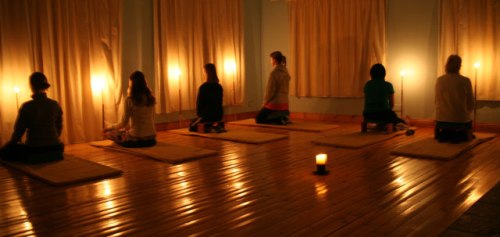
What is the difference between trataka, yoga nidra and hypnosis?
Swami Niranjan: The ultimate object of all these techniques is the same but the actual techniques are different. The common aim of yoga nidra, trataka, and hypnosis is developing the faculties and stopping the dissipation of mind. Once we are able to stop the dissipated nature of the mind we are able to go deep into ourselves and awaken the faculties of our unconscious and subconscious minds.
In yoga nidra we direct our mind wilfully through the experiences of visualisation, memory, sensations, etc.; all the different activities of consciousness are experienced. But yoga nidra does not stop here. It takes the individual through a process of self-awareness leading to the discovery of the inner nature or the deeper mind. The aim of yoga nidra is not only to provide relaxation or awaken man’s creative nature but also to give control and direction to the unmanifested qualities.
Traditionally it is said that there are more than eighty stages of yoga nidra. It starts with simple body awareness and ‘so-called’ astral travelling but includes awareness of our inner self, knowledge of the karan sharir (causal body). It is a vast technique.
Trataka, on the other hand, is a very simple method of concentration or dharana. The simple act of holding the image in the mind for an extended period of time helps to locus the dissipated energies of the senses, intellect and emotions at one point – ekagrata. This acute or undivided concentration in which we are able to focus the mind wilfully, first of all on a manifest object and later on some concept or idea, is the purpose of trataka. It provides an unfluctuating and unwavering state of mind.
Hypnosis is different. It acts like a catalyst to awaken certain deep-rooted impressions of the mind and dormant brain centres. A proficient hypno-therapist can achieve this and it is good for those who lack willpower and self-confidence. However, if you have enough willpower and self-confidence, hypnosis is not necessary although it is a very powerful tool if used, correctly.
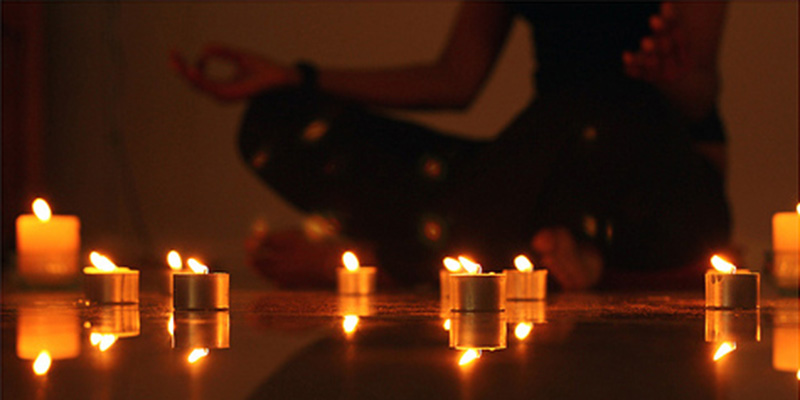
In hypnosis one is guided to a point where awareness of body and mind is lost and one is under the control of the directions of the hypnotist. In yoga nidra however, even in the state of unconsciousness there is awareness. Most people will have experienced at least once that they have been aware that they are dreaming or they are aware that they are sleeping. Yoga nidra provides this continuous awareness even in deeper states of mind.
One instruction given during trataka, is ‘Keep the mind entirely devoid of thought’. Surely anyone able to do this would be beyond the practice of trataka?
Swami Niranjan: In the initial practice of trataka, whenever one begins to concentrate the mind intently on an object, whether it be a candle flame or anything else, at that point the dissipated faculties of mind are focused in concentration of the object. As long as you practise external trataka the mind remains steady and concentration remains sharp, even though, after trataka, again the same dissipated nature of mind will manifest. However, during the practice, the pratyahara of the senses induces the pratyahara of the mental faculties, and it is the dharana of the mental faculties which is actually known as antaranga, trataka. Holding the mental faculties at one point of concentration and not allowing them to waver, is the subtle aspect of trataka.
Even in the matra by Yogi Swatmarama where he describes trataka, he speaks of ‘sukshma lakskya’ or ‘the subtle direction’, and according to Yoga this would mean awareness of the mental faculties, and holding the concentration of the mental Faculties, rather than the concentration of the sensory perceptions. It is here that keeping the mind entirely devoid of thought will help in pin-pointing and bringing together, the states of manas, buddhi and chitta.
In the practice of antaranga trataka, manas, buddhi and chitta, the three faculties, are centred in the object of concentration. Unless the concentration becomes so intense that there is no separation of ‘me’ as the practitioner, and the object and the process of practice, one cannot experience the higher states, one cannot experience samadhi, and one cannot go beyond the state of ahamkara-ego.
Follow us on Facebook
Follow us on Twitter
Latest


Seven Vows and Steps (pheras) of Hindu Wedding explained
Views: 9,206 Indian marriages are well renowned around the world for all the rituals and events forming part of the...


Sari or Saree is symbol of Indian feminism and culture
Views: 7,430 One of the most sensual attires of a woman in India is undoubtedly the sari. It is a...


Atithi Devo Bhava meaning in Hinduism and India
Views: 7,200 Atithi Devo Bhava, an ancient line taken from the Hindu scriptures and was originally coined to depict a visiting person whose...


Sanskrit Is More Than Just A Method To Communicate
Views: 5,394 -By Ojaswita Krishnaa Chaturvedi anskrit is the language of ancient India, the earliest compilation of sound, syllables and...


Significance of Baisakhi / Vaisakhi
Views: 6,618 Baiskhi is also spelled ‘Vaisakhi’, and is a vibrant Festival considered to be an extremely important festival in...


Navaratri: The Nine Divine Nights of Maa Durga!
Views: 7,723 – Shri Gyan Rajhans Navratri or the nine holy days are auspicious days of the lunar calendar according...


History of Vastu Shastra
Views: 10,952 Vastu Shastra (or short just Vastu) is the Indian science of space and architecture and how we may...


Significance of Bilva Leaf – Why is it dear to Lord shiva?
Views: 10,573 – Arun Gopinath Hindus believe that the knowledge of medicinal plants is older than history itself, that it...


Concept of Time and Creation (‘Brahma Srishti’) in Padma Purana
Views: 10,852 Pulastya Maha Muni affirmed to Bhishma that Brahma was Narayana Himself and that in reality he was Eternal....


Karma Yoga – Yog Through Selfless Actions
Views: 9,727 Karma Yoga is Meditation in Action: “Karma” means action and “yoga” means loving unity of our mind with...

